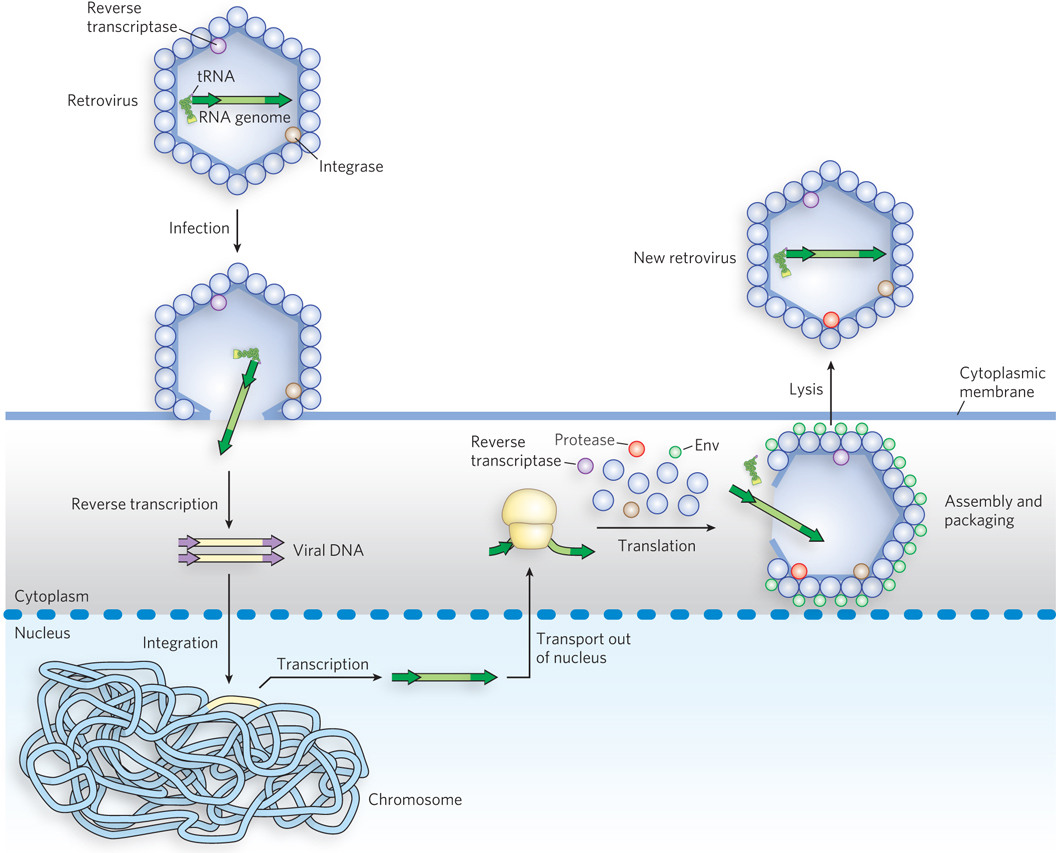
Retroviral infection of a mammalian cell. Viral particles entering the host cell (left) carry reverse transcriptase and a cellular tRNA (from a previous host) already base- paired to the retroviral RNA. The tRNA facilitates immediate conversion of the RNA to double- stranded DNA by the action of reverse transcriptase. The DNA enters the nucleus and is integrated into the host genome, a process catalyzed by a virally encoded integrase. On transcription and translation of the viral DNA, new viruses are formed and released by cell lysis (right).